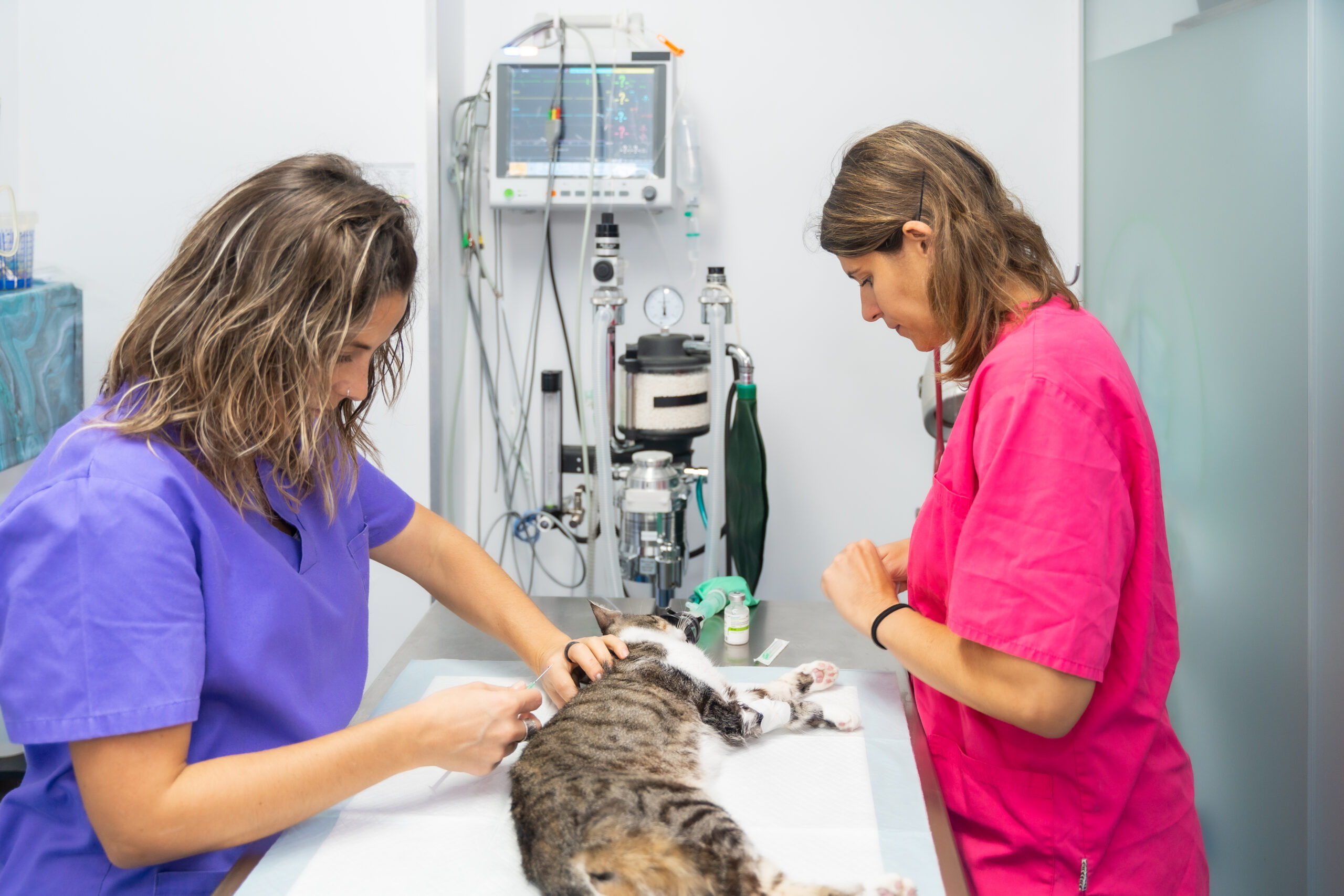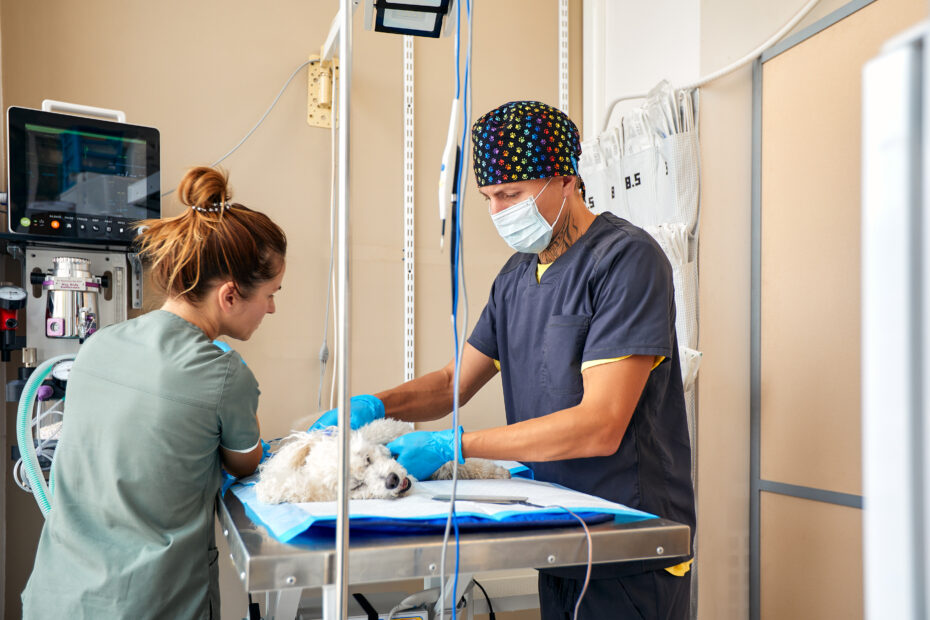Centralized In-House Oxygen Plants are Replacing Cylinder Delivery
Veterinary clinics and hospitals rely on oxygen for critical functions, including surgeries, emergency care, and respiratory support. Traditionally, oxygen has been delivered via cylinders or liquid oxygen tanks, but onsite oxygen generation offers a compelling alternative.
This article examines the advantages of a central in-house oxygen generation plant over both traditional delivered oxygen systems and smaller, decentralized oxygen concentrators. We explore the benefits of reliability, cost-effectiveness, operational efficiency, and scalability for veterinary facilities.
The Current Landscape: Delivered Oxygen and Small-Scale Concentrators
Delivered Oxygen
Veterinary practices often source oxygen through:
- Compressed Oxygen Cylinders: Require frequent replacement, storage, and handling.
- Liquid Oxygen Tanks: Suitable for high-volume needs but come with high setup and maintenance costs.
Challenges
- High recurring costs (deliveries, rentals, storage).
- Operational risks associated with logistics and handling.
- Limited flexibility to meet fluctuating demand.
Individual Oxygen Concentrators
Smaller oxygen concentrators are sometimes deployed for specific applications, such as feeding individual oxygen cages or supporting single operating rooms.
Advantages
- Lower initial cost compared to central systems.
- Portable and simple to operate.
Challenges
- Limited capacity: Unsuitable for facilities with multiple high-demand areas.
- Maintenance complexity: Multiple units require frequent servicing.
- Operational inefficiency: Units operate independently, potentially leading to redundancy or supply shortages in emergencies.
Central Whole-Facility Oxygen Generation: The Comprehensive Solution
A central oxygen generation system serves the entire facility, supplying oxygen directly to various points through a centralized distribution system. Therefore, this approach combines the efficiency of onsite generation with the scalability needed for modern veterinary practices.
Benefits of a Central System Over Individual Concentrators
1. Cost-Effectiveness
Central systems allow veterinary facilities to manage oxygen costs more effectively.
- Economy of Scale: A central plant provides oxygen for the entire facility at a lower per-liter cost compared to multiple small units.
- Single Maintenance Schedule: Central systems simplify maintenance, reducing labor and service costs.
- Long-Term ROI: While the upfront investment is higher, the system pays for itself quickly through reduced operating costs and improved efficiency.
2. Operational Efficiency
Streamlining oxygen supply across the facility enhances productivity and simplifies workflows.
- Unified Supply Network: A central plant ensures consistent oxygen delivery across operating rooms, oxygen cages, and other points of use.
- Eliminates Redundancy: Replaces the need for multiple standalone units, streamlining operations.
- Scalability: The system can be designed to handle growing demands as the facility expands.
3. Enhanced Reliability
Centralized systems provide a robust and dependable oxygen supply.
- Continuous Supply: A central system provides uninterrupted oxygen, even during peak usage or emergencies.
- Redundancy Features: Modern plants include backup systems to ensure reliability in case of a component failure.
4. Improved Patient Outcomes
Access to consistent, high-quality oxygen improves care for veterinary patients.
- Consistent Quality: Centralized systems deliver medical-grade oxygen with uniform purity levels to all parts of the facility.
- Rapid Access: Centralized delivery ensures that oxygen is readily available wherever needed, which reduces response times in critical situations.
5. Space Optimization
Effective space utilization is key for busy veterinary clinics.
- Single Installation Point: A central plant requires less cumulative space compared to multiple standalone units spread throughout the facility.
- Minimized Clutter: Frees up room in treatment areas, enhancing workflow and safety.
6. Environmental Benefits
A central oxygen generation system supports sustainability initiatives.
- Reduced Energy Use: One centralized system is more energy-efficient than several smaller units operating independently.
- Lower Carbon Footprint: Also eliminates the need for transportation of cylinders and reduces waste associated with disposable oxygen containers.

Case Study: Central Oxygen Plant at a Veterinary Specialty Hospital
Background
A large veterinary hospital with multiple operating rooms, oxygen cages, and an intensive care unit previously relied on a mix of delivered oxygen and small concentrators. Challenges included inconsistent supply, high costs, and logistical complexity.
Solution
The hospital installed a central oxygen generation plant with a networked distribution system.
Results
- Cost Savings: Reduced annual oxygen-related expenses by 40%.
- Efficiency Gains: Oxygen available on-demand across all critical care areas.
- Improved Safety: Reduced handling of high-pressure cylinders and eliminated risks associated with system downtime.
Comparing Central Systems vs. Individual Concentrators
| Feature | Central Oxygen Plant | Individual Concentrators |
| Initial Investment | Higher, but scalable ROI | Lower upfront cost |
| Maintenance | Centralized and simplified | Frequent, unit-specific servicing |
| Capacity | High, supports multiple zones | Limited to single applications |
| Reliability | Redundant and robust | Prone to individual unit failures |
| Space Requirements | Centralized, optimized layout | Dispersed, more cumulative space |
| Operational Complexity | Low, streamlined management | Higher, due to multiple units |
Challenges and Considerations for Central Systems
- Upfront Costs: Higher initial investment; however, financing options are available, and long-term savings offset these costs.
- Installation: Requires careful planning to integrate with existing infrastructure.
- Training: Staff must be trained to operate and monitor the centralized system effectively.
Conclusion
A central oxygen generation plant is the ideal solution for veterinary clinics and hospitals aiming to balance cost-efficiency, reliability, and scalability. As stated, veterinary clinics and hospitals need oxygen for their everyday tasks. Compared to delivered oxygen and individual concentrators, a centralized system delivers unparalleled benefits in operational efficiency, patient outcomes, and environmental sustainability.
Next Steps
Veterinary facilities seeking to upgrade their oxygen supply systems should consider a central oxygen generation plant. For a customized consultation and solution design, contact NOVAIR USA at +1 (716) 564-5165 or www.novair-usa.com.
—
About NOVAIR USA
NOVAIR specializes in advanced oxygen generation systems tailored to the needs of veterinary and medical facilities. With our expertise, your practice can achieve superior care standards while optimizing operational efficiency.
Contact us to learn more.


